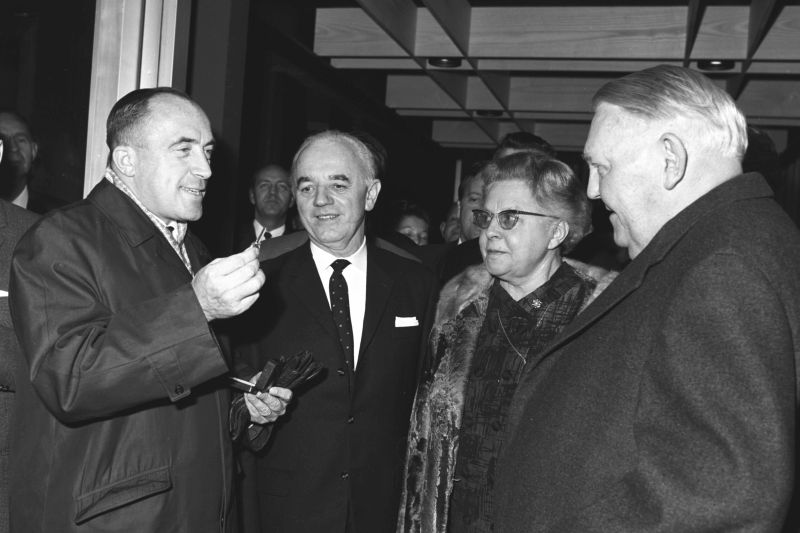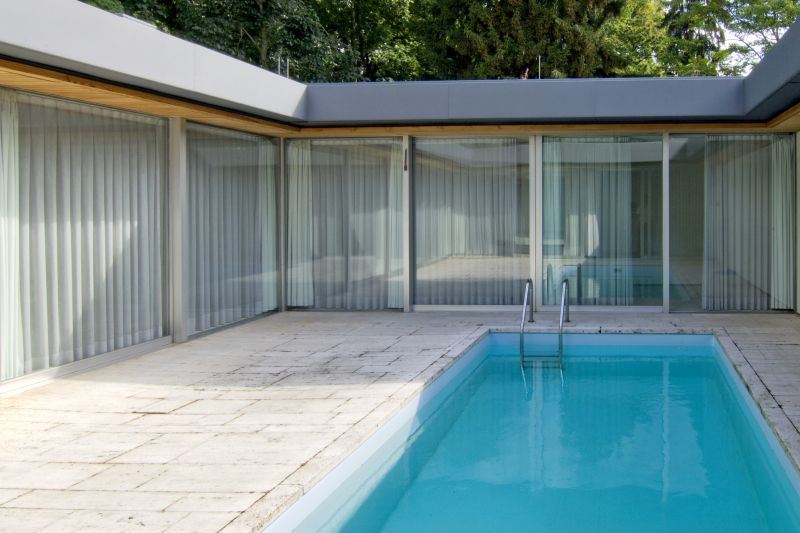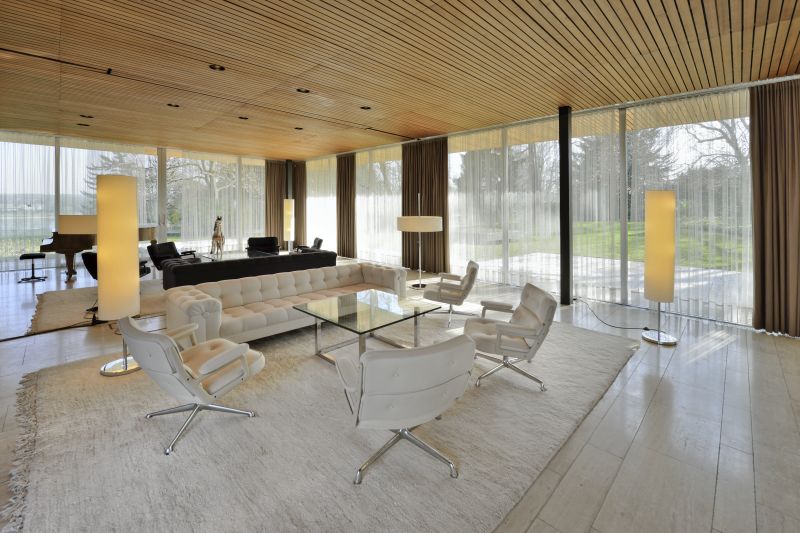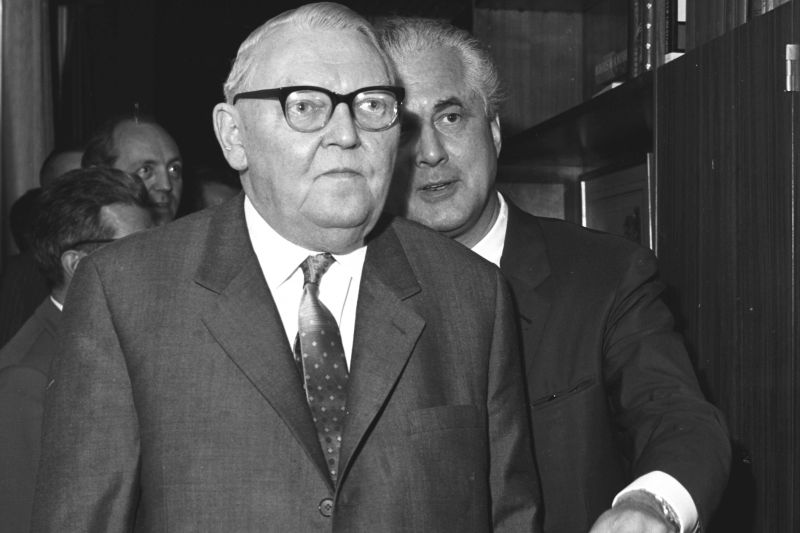At one time, the news that Chancellor Ludwig Erhard had decided to have an official Chancellor’s residence constructed on the grounds of Palais Schaumburg – and with a swimming pool no less! – caused an uproar. But visitors to the edifice now known as the Kanzlerbungalow (1964) are still somewhat taken aback at the narrowness of the main residential-wing rooms, and the unusually small size of the swimming pool, which is six metres long by three metres wide. The transparency of the prosaic building and its many glass facades that constitute the edifice’s exterior are almost reversed in the private wing, in that the bedrooms have no windows facing the grounds. A glass wall with a sliding door in it merely leads to a tiny patio – and thus all the occupants have to rest their gaze on are the swimming pool and the rooms on the opposite side of the patio.
But the criticism that was initially levelled at the Kanzlerbungalow was actually prompted by other things: the fact that the very politician who preached moderation and who, in the debate over funding to aid war victims, came out in favour of keeping the expenditures low, built himself an 800 square metre residence with a pool. Plus, they pointed out, this Chancellor had the temerity to express outrage at the Bundestag Budget Committee’s desire to limit the Kanzlerbungalow’s construction expenditures to two million Deutschmarks. Some observers were extremely puzzled not only by this, but also by the architectural style of the residence and by Chancellor Erhard’s decision, in light of the negative media reaction to how the project turned out, to exclude the press from the May 1964 topping-out ceremony. “I fear,” former Chancellor Konrad Adenauer said in 1967, “this place is simply unliveable.”
But Mr. Adenauer was mistaken, for as it turned out, German chancellors had no difficulty living and working in the Kanzlerbungalow – even though the ambience was never as relaxed as when pop star Udo Jürgens performed for Chancellor Kurt Georg Kiesinger or when Helmut Schmidt played the piano. Nor did luminaries pop in every now and then. Although Richard Nixon, the G7 heads of state or royalty from Japan or The Netherlands came to stay at the Kanzlerbungalow – all of whom had been put up there by Chancellor Willy Brandt and Federal President Gustav Heinemann. And yet, this low-rise edifice was a place where government policy was shaped, and where rest and relaxation were valued.
The ultra modern architecture of the Kanzlerbungalow (1964) differed greatly from the official residences in other countries, such as the White House in the US, 10 Downing Street in the UK, and the Elysée Palace in France. The edgy architecture was deliberately intended to be a complete departure from that of the Nazi period. The Kanzlerbungalow was designed by Sep Ruf, who had previously designed a private residence for Ludwig Erhard (1954-1955) on Lake Tegernsee. The private spaces and those used for official functions in the Kanzlerbungalow are systematically separated from each other.



